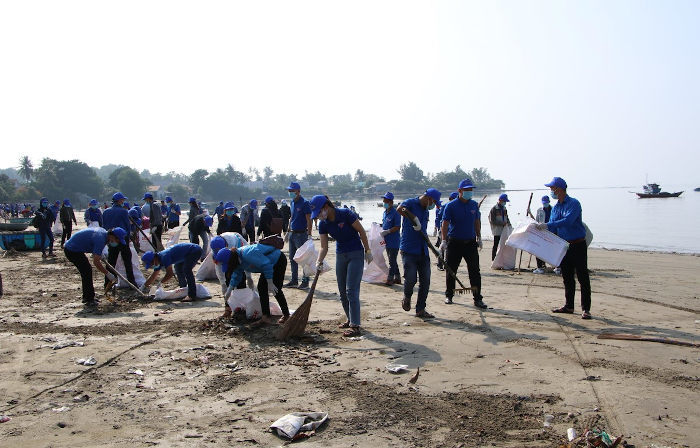Vietnam discharges 0.28-0.73 million tons of plastic waste to the ocean each year, or 6 percent of the world’s total figure, ranking fourth among the countries polluting the ocean the most, a study shows.
The Vietnam Plastics Association in 2019 estimated that the plastics output and consumption level was 5 million tons in 2015.

The average plastics consumption in 2019 was 41 kilograms per head, or 10 times higher than the 3.8 kilograms per head in 1990.
A recent study by Le Hoang Oanh, Tran Thi Lan Anh and Nguyen Thi Phuong Loan from the Hanoi University of Natural Sciences found that Vietnam discharges about 0.28-0.73 million tons of plastic waste a year.
It is estimated that 80-100 percent of solid waste, including plastic waste, is collected in urban areas. The figure is 40-55 percent in rural areas.
The researchers found that of the recyclable urban waste in Hoi An City, plastic waste accounted for 8.4-14 percent.
The volume of plastic waste from restaurants was the lowest, 8.4 percent. The proportion of plastic waste from families, hotels and streets was 14 percent of total waste.
The proportion of plastic waste in Can Tho City was lower than Hoi An, 6.13 percent. Of the plastic waste in the city, plastic bags accounted for the largest proportion, 45.72 percent.
The study on large-sized plastic waste on Sai Gon River, found that soft PO and PS-E accounted for the largest proportion.
Plastic waste accounted for 6 percent of urban solid waste in Hue City and 8 percent in Hanoi. It accounted for 3.2-8.3 percent of total waste on Sai Gon River and lower than the proportion of plastic waste in urban solid waste of HCM City (16 percent).
According to the Ministry of Natural Resources and the Environment, there is a relation between the amount of plastic waste collected and solid waste.
The eastern provinces of the southern region have the highest proportion of solid waste which can be collected and treated (99.4 percent), followed by Red River Delta (88.9 percent). The figures are 57.5 percent for the Central Highlands, and 56.4 percent in the Northern Midlands and Mountains.
A considerable volume of plastic waste is recycled at craft villages, including Trung Van, Tan Trieu, Tien Duoc in Hanoi and Minh Khai in Hung Yen.
Some coastal cities such as Quang Ninh and Hai Phong have alot of plastic waste floating in the sea. It includes waste from households, agriculture production, hospitals, aquaculture and transport.